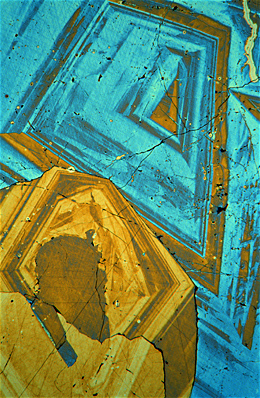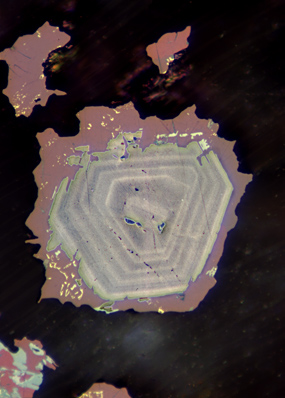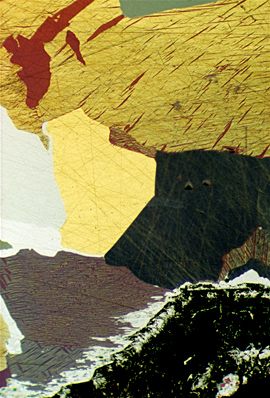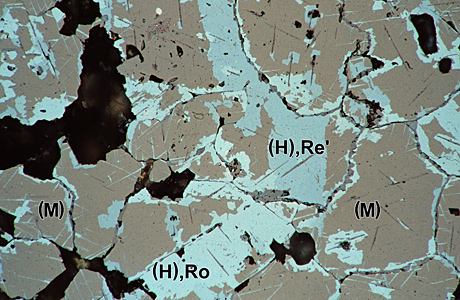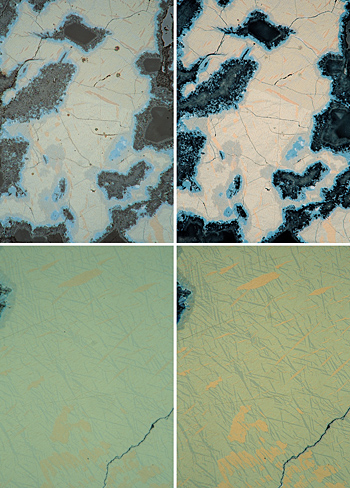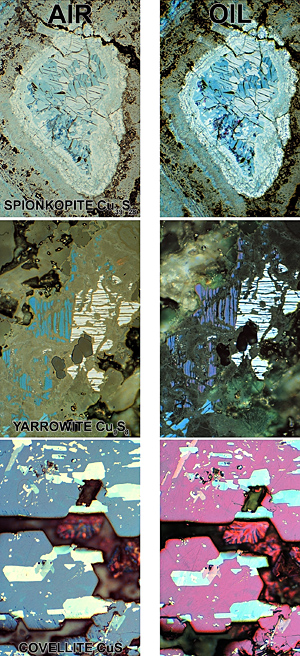Ore Microscopy Photo Gallery
|
|
Digital image in plane polarised light(enhanced to exemplify the growth and chemical - Cu -zonation) of krutaite enclosed in umangite. Clausthal, Germany. Vertical field ~ 220 microns. A J Criddle. Copyright Natural History Museum London. |
Digital image created from photomicrograph in plane polarised light illustrating native tellurium (bireflectant white to gray), vulcanite (bireflectant and pleochroic yellow to dark gray) and rickardite (bireflectant and pleochroic red to deep purple). Good Hope Mine, Vulcan, Colorado, USA. Vertical field ~ 220 microns. C J Stanley. Copyright Natural History Museum London |
|
Digital image created from photomicrograph in plane polarised light illustrating hematite Ro and Re'orientations replacing magnetite. Horizontal field ~ 220 microns. C J Stanley. Copyright Natural History Museum London. |
|
Digital images created from photomicrographs in plane polarised light in air (left) and oil (right). Top pair. Kuramite is slightly pinkish and bireflectant with stannoidite distinctly orange. Stannite is greyish as a replacement towards the margins and is associated with blue chalcocite. Gunheath, Cornwall, UK. Vertical field ~ 1 mm Bottom pair. Stannoidite and kesterite are "exsolutions" in stannite. Gunheath, Cornwall, UK. Vertical field ~ 220 microns. C J Stanley. Copyright Natural History Museum London. |
Digital images created from photomicrographs in plane polarised light in air (left) and oil (right) illustrating Ro and Re of spionkopite (top) a true "blue-remaining covellite" from Bisbee, Arizona, USA. Middle images are of yarrowite from Cannington Park, Somerset, UK. Bottom images are of covellite from Laramie Mountain, Wyoming, USA. Vertical field ~ 500 microns. C J Stanley. Copyright Natural History Museum London. |


